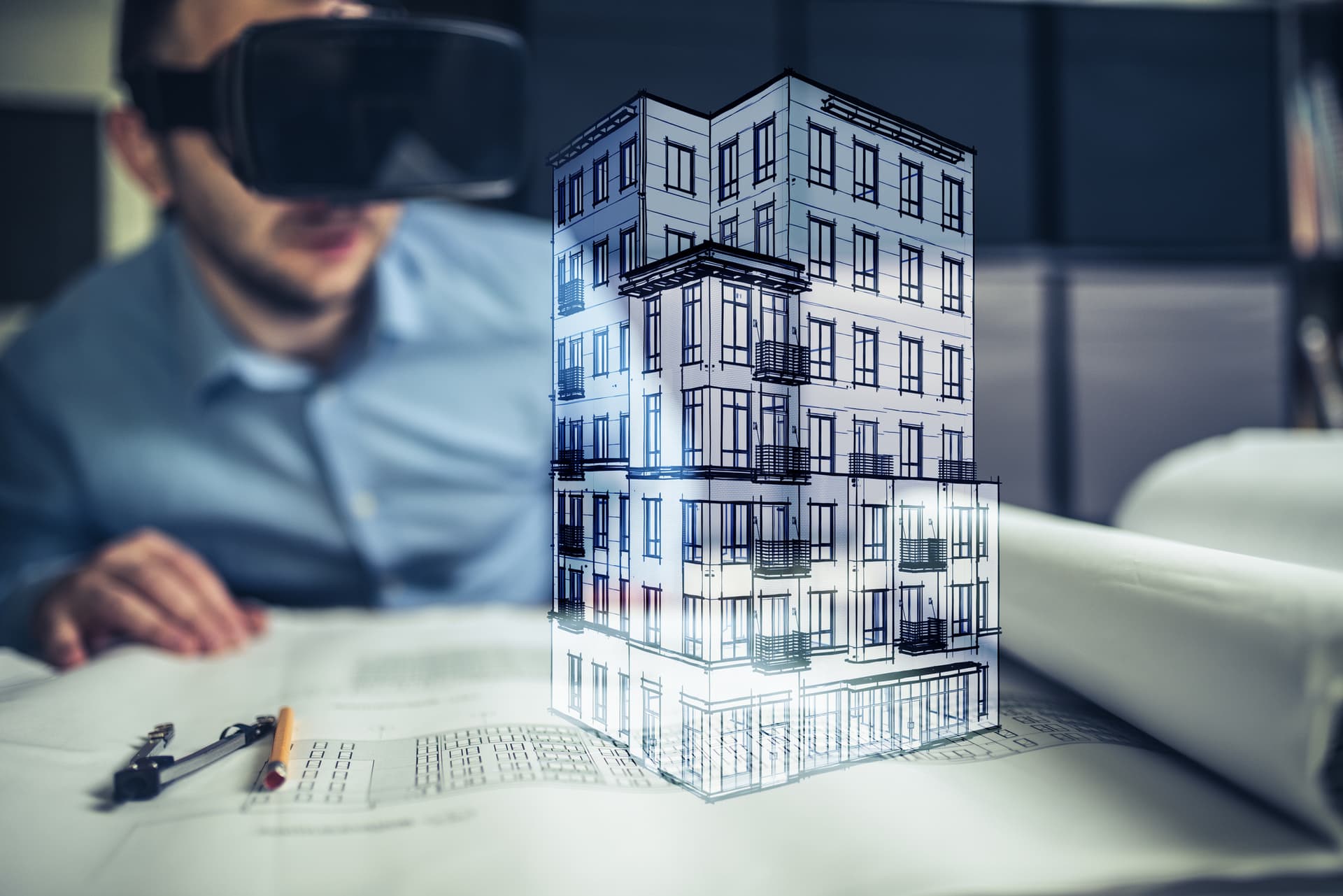By Joe Tapp, World Digital Foundation

By embracing technological advances and refining their processes, the manufacturing, healthcare, and technology sectors have made many gains in terms of productivity and a reduction in CO2 emissions.
Could Digital Twins help the construction sector in these areas?
Yes, says Paul Dunn, Director of global architecture company CallisonRTKL. He believes integrated technology and Digital Twins are a major part of the solution, noting, “To achieve transformational change in our industry, design, technology, and construction must be fully integrated. The industry must go further in embracing digital, advanced materials, and new technologies.”
He continues, noting, “Technology and manufacturing will help evolve our buildings as products. We are living at a time when flawless quality is truly viable when digital models and simulations with real-world building data create endless possibilities for monitoring, machine learning, and human-centered design. We must secure integrated whole-building design from inception to afterlife.”

The Problems
According to a 2019 report by the United Nations Environment Program, energy-related CO2 emissions from building operations increased by 9.95 gigatonnes in 2019. The increase can be attributed to a shift away from the direct use of coal and oil – towards electricity, which has a higher carbon content. Moreover, when you add emissions from the building construction industry on top of operational emissions, the sector accounted for 38 percent of total global energy-related CO2 emissions.
Adding to the issue is that half of all existing buildings in the United States were built between 1960 and 1999, with 21 percent made before 1960. These buildings are poorly insulated, are not energy inefficient, and, as a result, are contributing 40 to 70 percent of overall emissions in American cities.
Research from the Saïd Business School at Oxford University also shows that 90 percent of the world’s infrastructure projects are either late or over-budget. Berlin Brandenburg Airport was nine years late on completion and six times over-budget, with 66,500 errors cited during construction. Such mistakes lead to higher construction times and emissions per project.
The Solution
Digital Twins act as a collection of digital data representing a physical object, allowing the construction industry to use advanced 3D models connected to AI-driven analytics to better measure, predict, and mitigate a building’s emissions output. Applying Digital Twins during construction can allow planners and builders to streamline the building process and avoid additional construction hours, costs, and emissions.
A recent MarketsandMarkets report estimates the Digital Twin market will grow from $3.1 billion in 2020 to $48.2 billion per year by 2026, at an annual compound annual growth rate of 58 percent.
The One Sydney Harbour three-tower apartment project in New South Wales, Australia, made full use of its Digital Twin; design errors were identified in a much shorter time frame than traditional methods, saving millions of dollars in building costs.
Victor Dominello, NSW Minister for Customer Service, says, “The genius of a Digital Twin is that it’s opened and shared so we can share ideas using this great platform, and when you share ideas, you generate progress, you generate innovation, and you generate the good for the people of our state.”
He adds, “You can actually own the future with a Digital Twin because you can see it.”
Some office spaces and city buildings closed during COVID-19 lockdowns also adopted Digital Twin technology and gathered previously unknown data. Jim Whittaker, Engineering Services Lead at real estate world leader JLL, believes the pandemic is accelerating Digital Twin adoption. He thinks it’s now critical for building owners and builders to rethink how their properties are built, used, and managed.
“Objective and credible data has always been needed to make decisions on property portfolios and inform investment decisions,” he explains. “But agile, scalable, and dynamic workplaces are needed now more than ever. Digital Twins support these requirements by providing the data and visualizations needed to make more rapid and flexible decisions.”
A key Digital Twin asset is interconnection. A World Economic Forum report stated that smart tech such as Digital Twins will be essential to connecting urban areas while managing emissions and energy across cities.
The report said: “With Climate Change accelerating, we need more action on three fronts:
- We need to have more energy produced from renewable sources.
- We need more cars, public transportation, and heating to be powered by electricity.
- We need everything from factories and homes to transport systems and consumer devices to become more energy efficient.
It also noted, “An intelligent energy infrastructure through digitalization is key to integrating these actions to make the transition successful.”

Overcoming Challenges to Achieve Success
The first challenge of Digital Twin adoption is establishing the technology as common use. Many within the construction industry still feel overwhelmed by new digital tools. A report from the news and analysis site Construction Dive found that 60 percent of construction professionals cited tech adoption as the industry’s biggest obstacle.
SmartWorldOS, produced by Digital Twin market leader Cityzenith, is an easy-to-use, accessible Digital Twin platform that could break down this adoption barrier.
According to company CEO Michael Jansen, SmartWorldOS is designed to allow customers to scale from a single building to a portfolio of hundreds and even thousands of properties. Cityzenith’s tech has already been used in many projects worldwide, such as the Orlando SED smart district, the Lamina luxury property tower project in Saudi Arabia, and the Amaravati smart city project in India.
Jansen understands the importance of transforming the construction industry while reducing urban carbon emissions, saying, “The sector must catch up with the pace of emissions reduction in other industries, such as manufacturing. Powerful Digital Twin modeling can manipulate huge amounts of data to enable smooth and accurate ‘right first time and on time’ construction on new projects and help retrofit older buildings to cut emissions now and in the future.”
He continues, “We are already working with major cities worldwide, donating SmartWorldOS as part of our ‘Clean Cities – Clean Future’ initiative. Cities and urban areas are responsible for 70 percent of global emissions (source: UNHabitat) and the construction industry contributes significantly to this percentage.”
“With the impact of climate change looming, it is time to utilize Digital Twins within construction, modernize the industry, and reduce emissions output,” Jansen adds.

The World Digital Foundation is a digital marketing and technology company focused on helping businesses address the challenges they face online and in the marketplace. Their foundational marketing products allow businesses to build a stronger presence, connect with more customers, and grow a stronger brand. Their team of international experts can help you grow your business online, while you concentrate on delivering for your customers.
